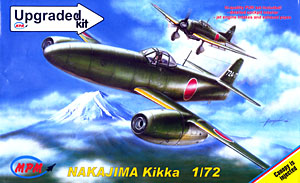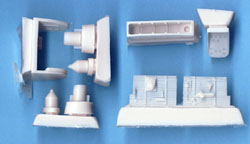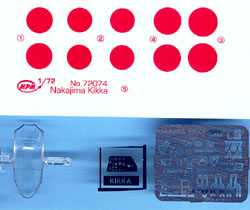MPM's 1/72 Nakajima Kikka "Upgraded Kit"
By Chris Banyai-Riepl
 |

 |
 The Kit
The Kit The cockpit is the main area of upgrade in this kit and the resin tub is very nicely done. You get separate sidewalls, a one-piece tub and a seat. The original kit provides the etched metal instrument panel and rudder pedals, as well as the control stick. The cockpit opening is somewhat tight so not much will be seen when it's all done, but it will really look sharp. With the wing opening in the bottom of the fuselage, you could glue the fuselage together and fit the finished cockpit tub in after you're finished sanding the seams, protecting your hard work on the interior.
The cockpit is the main area of upgrade in this kit and the resin tub is very nicely done. You get separate sidewalls, a one-piece tub and a seat. The original kit provides the etched metal instrument panel and rudder pedals, as well as the control stick. The cockpit opening is somewhat tight so not much will be seen when it's all done, but it will really look sharp. With the wing opening in the bottom of the fuselage, you could glue the fuselage together and fit the finished cockpit tub in after you're finished sanding the seams, protecting your hard work on the interior. be able to fit the rear piece in after the nacelle is together, but you'll have to fit the front piece in beforehand.
be able to fit the rear piece in after the nacelle is together, but you'll have to fit the front piece in beforehand.